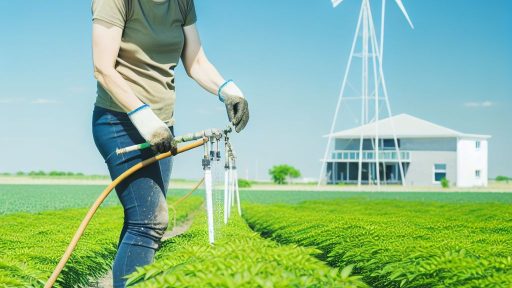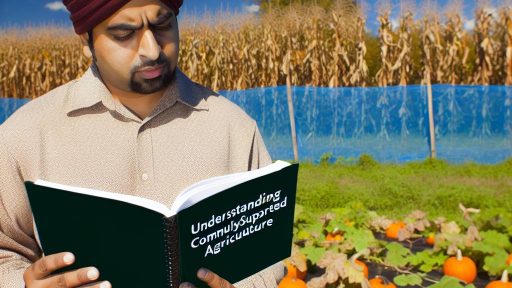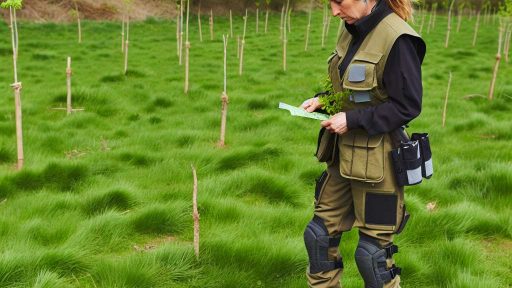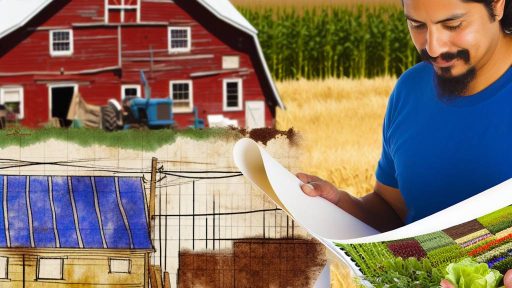Introduction to Organic Greenhouse Farming
Definitions and Benefits
Organic greenhouse farming involves growing plants in a controlled environment.
This approach emphasizes organic practices and sustainable agriculture.
Farmers avoid synthetic fertilizers and pesticides to protect the environment.
Moreover, organic greenhouses support healthy plant growth year-round.
They create an optimal environment for various crops, regardless of the season.
Enhancing Sustainability
Organic greenhouse farming contributes significantly to sustainable agriculture.
It reduces the carbon footprint by minimizing transportation needs.
Furthermore, this method utilizes natural resources more efficiently.
For instance, recycled water and compost are often used, promoting circular economy practices.
Improving Crop Quality
Fruits and vegetables grown in organic greenhouses often contain higher nutrient levels.
This can lead to better health outcomes for consumers.
Additionally, organic practices enhance the flavor profile of produce.
As a result, consumers prefer organic products, influencing market demands.
Creating Economic Opportunities
Organic greenhouse farming can lead to job creation in local communities.
These farms require diverse skills and offer various employment opportunities.
Transform Your Agribusiness
Unlock your farm's potential with expert advice tailored to your needs. Get actionable steps that drive real results.
Get StartedMoreover, they can foster local agritourism, attracting visitors interested in organic practices.
This creates additional revenue streams for farmers and local businesses.
The Advantages of Year-Round Production in a Climate-Controlled Environment
Consistent Crop Quality
Year-round production ensures stable crop quality throughout all seasons.
This consistency meets consumer demand for high-quality produce.
Controlled environments minimize stress factors that affect plant health.
Consequently, plants can thrive in optimal growing conditions year-round.
Enhanced Yield Optimization
Greenhouses allow for maximizing yields by controlling environmental factors.
Farmers can adjust temperature, humidity, and light levels as needed.
This flexibility leads to increased productivity in crop cycles.
Transitioning between different crops becomes smoother and more efficient.
Reduced Pesticide Usage
Climate-controlled environments reduce pest infestations effectively.
A healthier growing environment leads to lower pesticide requirements.
Organic methods promote natural pest deterrents, enhancing sustainability.
With fewer chemicals, produce quality improves, attracting health-conscious consumers.
Improved Resource Efficiency
Year-round production maximizes land usage, minimizing wastage.
Water conservation technologies enhance efficiency in resource utilization.
Hydroponic and aquaponic systems further optimize water use in greenhouses.
These advancements lead to sustainable farming practices with lower footprints.
Flexibility in Crop Selection
Farmers have the luxury of choosing a wider variety of crops year-round.
This diversification allows adaptation to market trends and consumer preferences.
Farmers can capitalize on niche markets that demand specialty produce.
Additionally, it fosters resilience against unforeseen market changes.
Economic Stability for Farmers
Year-round productivity contributes to consistent income streams for farmers.
This reduced dependency on seasonal fluctuations enhances economic stability.
Showcase Your Farming Business
Publish your professional farming services profile on our blog for a one-time fee of $200 and reach a dedicated audience of farmers and agribusiness owners.
Publish Your ProfileSelling produce throughout the year ensures better cash flow management.
As a result, farmers can invest in improved technologies and practices.
Selecting the Right Crops for Organic Greenhouse Farming in the USA
Understanding Local Climate and Conditions
Climate significantly influences crop selection for greenhouse farming.
Evaluate the local climate to determine suitable crops.
Consider temperature, humidity, and sunlight availability in your region.
Assessing Market Demand
Market demand affects the profitability of your crops.
Research consumer preferences and purchasing trends.
Choose crops that have a steady market throughout the year.
Identifying High-Value Crops
High-value crops can maximize your return on investment.
Consider growing herbs, microgreens, and specialty vegetables.
These crops often have higher market prices compared to traditional crops.
Diversifying Crop Varieties
Diversifying your crop varieties reduces risk associated with crop failure.
Growing a mix of crops can enhance soil health and ecosystem sustainability.
Include a combination of leafy greens, fruits, and flowering plants.
Incorporating Seasonality
Plan for seasonal changes in crop production and selection.
Grow cool-season crops in winter and warm-season varieties in summer.
Utilizing this method ensures year-round harvests.
Utilizing Crop Rotation
Crop rotation enhances soil nutrients and reduces pests.
Implement a rotation schedule to maintain soil health.
Next, assess the success of your rotations for future plantings.
Evaluating Pest and Disease Resistance
Select crops that are naturally resistant to common pests and diseases.
This choice minimizes the need for chemical interventions.
Research varieties that thrive in organic settings.
Consulting with Local Experts
Local agricultural experts can offer valuable insights into crop selection.
Engage with agricultural extension services for guidance.
Networking with other organic farmers can also provide support.
See Related Content: Sustainable Farm Certification for Pesticide-Free and Non-GMO Farming
Soil Health and Fertility Management in Organic Greenhouses
The Importance of Soil Health
Soil health is crucial for successful organic greenhouse farming.
Healthy soil supports plant growth and provides essential nutrients.
It also enhances water retention and aeration, improving root development.
Moreover, healthy soil fosters beneficial microbial communities.
Organic Fertility Management Techniques
Farmers can use a variety of organic inputs to enhance soil fertility.
Compost is a popular choice, adding nutrients and improving soil structure.
Cover crops can also be effective by fixing nitrogen in the soil.
Additionally, applying organic fertilizers like fish emulsion boosts nutrient availability.
Soil Testing and Amendments
Regular soil testing helps farmers monitor nutrient levels.
Testing allows for informed decisions regarding amendments.
Farmers can adjust pH levels using natural lime or sulfur as needed.
Furthermore, adding organic matter improves soil fertility and structure.
Implementing Crop Rotation
Crop rotation is a key practice in organic greenhouses.
Showcase Your Farming Business
Publish your professional farming services profile on our blog for a one-time fee of $200 and reach a dedicated audience of farmers and agribusiness owners.
Publish Your ProfileThis method prevents nutrient depletion and suppresses pests and diseases.
Rotating different plant families also enhances soil diversity.
As a result, farmers can maintain healthier ecosystems.
Utilizing Mulch for Soil Protection
Applying mulch serves multiple purposes in organic greenhouses.
It conserves moisture and suppresses weed growth effectively.
Organic mulches, like straw or wood chips, add nutrients as they decompose.
Moreover, mulch protects soil from erosion and temperature extremes.
Delve into the Subject: Organic Pest Control Methods for Sustainable Farming in the USA
Pest and Disease Management Strategies in Organic Greenhouse Systems
Introduction to Organic Pest Management
Pest management in organic systems requires careful planning.
Organic farmers prioritize preventive measures over reactive solutions.
They focus on maintaining a balanced ecosystem in the greenhouse.
Preventive Measures for Pest Management
Implementing cultural practices can reduce pest outbreaks.
Crop rotation helps disrupt pest life cycles effectively.
Additionally, incorporating companion planting can deter pests.
Choosing resistant plant varieties further enhances pest resistance.
Biological Control Methods
Biological control utilizes natural predators and parasites to manage pests.
For instance, introducing ladybugs can control aphid populations.
Beneficial nematodes target soil-dwelling pests, providing effective results.
Moreover, microbial agents can suppress diseases in the greenhouse.
Utilizing Organic Pesticides
When necessary, organic pesticides are a viable option.
They must comply with organic farming regulations.
For example, neem oil and insecticidal soap are preferred choices.
Applying these products should follow strict guidelines for safety.
Monitoring and Identification Practices
Regular monitoring is crucial for effective pest management.
Farmers should inspect plants frequently for signs of pests or diseases.
Using sticky traps can help monitor pest populations in real-time.
Identifying the specific pest allows for targeted management strategies.
Integrated Pest Management Approach
An integrated approach combines multiple strategies for effectiveness.
This method reduces reliance on any single pest control tactic.
It enhances the resilience of the greenhouse ecosystem overall.
Furthermore, this strategy aligns with organic principles.
Education and Resource Sharing
Farmers can benefit from continuous education on pest management.
Participating in workshops and online courses enhances knowledge.
Sharing resources with fellow farmers fosters community support.
Collaboration often leads to innovative solutions tailored to local conditions.
Gain More Insights: Harnessing Waste to Generate Clean Energy on Farms
Water Management and Irrigation Techniques for Sustainable Production
Importance of Water Management
Effective water management ensures healthy plant growth.
It prevents water wastage and enhances sustainability.
Moreover, it helps in maintaining soil health over time.
Types of Irrigation Systems
Various irrigation systems maximize water efficiency.
Showcase Your Farming Business
Publish your professional farming services profile on our blog for a one-time fee of $200 and reach a dedicated audience of farmers and agribusiness owners.
Publish Your Profile- Drip irrigation delivers water directly to the roots.
- Sprinkler systems distribute water uniformly across fields.
- Surface irrigation relies on gravity to move water.
Furthermore, selecting the right system depends on crop needs.
Rainwater Harvesting
Rainwater harvesting captures and stores rainfall for use.
This practice reduces dependency on groundwater.
It also helps in managing stormwater runoff effectively.
Implementing storage tanks is crucial for effective management.
Soil Moisture Monitoring
Monitoring soil moisture is vital for optimal irrigation.
Using sensors can help determine when to irrigate.
This approach prevents over- and under-watering of crops.
Additionally, it enables precision that enhances productivity.
Water-Saving Techniques
Employing water-saving techniques boosts sustainability.
- Mulching reduces evaporation from the soil surface.
- Cover cropping helps maintain moisture levels.
- Soil amendments improve water retention capabilities.
Applying these techniques can lead to significant water savings.
Benefits of Sustainable Water Management
Sustainable water management reduces operational costs.
It enhances crop yield by ensuring adequate water supply.
Additionally, it fosters environmental protection.
In turn, protecting water resources supports biodiversity.
Explore Further: How Precision Agriculture Enhances Crop Yield and Farm Profitability
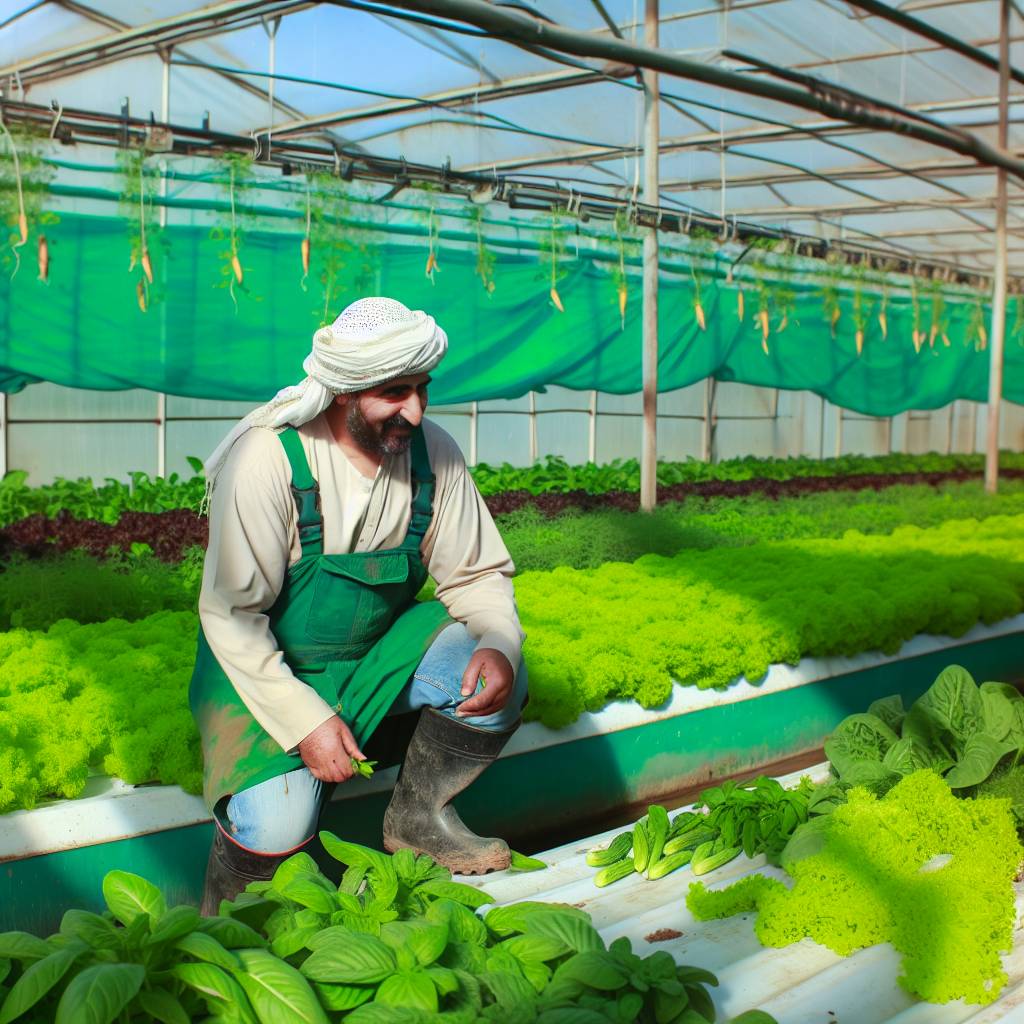
Implementing Eco-Friendly Technologies in Organic Greenhouses
Energy-Efficient Design
Energy-efficient design plays a crucial role in organic greenhouse farming.
It reduces energy consumption and greenhouse gas emissions.
For instance, passive solar design optimizes natural light.
This design minimizes the need for artificial lighting.
Moreover, green roofs support insulation and reduce heat loss.
Water Conservation Techniques
Water conservation is vital for sustainable production.
Implementing drip irrigation systems saves water efficiently.
These systems deliver water directly to plant roots.
Additionally, rainwater harvesting systems collect runoff water.
Using cisterns, farmers can recycle this water for irrigation.
Soil Health Management
Maintaining soil health enhances crop resilience and productivity.
Crop rotation supports nutrient diversity and reduces pests.
Furthermore, cover cropping protects soil from erosion.
These methods improve soil structure and fertility over time.
Renewable Energy Sources
Utilizing renewable energy is essential in organic greenhouses.
Solar panels provide sustainable electricity for greenhouse operations.
Wind turbines can also supplement energy needs in suitable areas.
Besides, biogas systems can convert organic waste into energy.
Integrated Pest Management
Integrated pest management (IPM) fosters a balanced ecosystem.
This strategy employs natural predators to control pest populations.
Additionally, it uses organic pesticides as a last resort.
Ultimately, IPM minimizes chemical use and promotes biodiversity.
Sustainable Crop Varieties
Selecting sustainable crop varieties supports ecological resilience.
Farmers should choose local and heirloom varieties for better adaptation.
Showcase Your Farming Business
Publish your professional farming services profile on our blog for a one-time fee of $200 and reach a dedicated audience of farmers and agribusiness owners.
Publish Your ProfileThese crops often require fewer resources and exhibit more hardiness.
Furthermore, diversifying crops can reduce disease susceptibility.
Education and Community Engagement
Education empowers farmers to implement eco-friendly practices effectively.
Workshops and local organizations provide valuable resources.
Networking with other farmers enhances knowledge sharing.
Community engagement fosters a collective commitment to sustainability.
Market Trends and Consumer Demand for Organic Produce in the USA
Increasing Consumer Awareness
Consumers are increasingly aware of the benefits of organic produce.
They seek healthier options for themselves and their families.
This shift is influenced by a growing concern for nutrition and health.
Moreover, organic farming practices promote environmental sustainability.
Rising Sales of Organic Produce
The organic produce market shows consistent growth in recent years.
Sales of organic fruits and vegetables have surpassed traditional products.
This growth is supported by data from the U.S. Department of Agriculture.
Statistics indicate a rise in organic purchases across all demographics.
Changing Consumer Preferences
Today’s consumers prefer organic foods over conventional options.
They prioritize quality and taste, leading to higher demand.
Also, many consumers desire transparency about food sources.
This trend drives interest in local and organic farming practices.
Health and Environmental Concerns
Health concerns significantly influence consumer decisions.
Organic produce is perceived as safer and more nutritious.
Furthermore, consumers are wary of chemicals and pesticides.
This impacts their purchasing habits and preferences.
Impact of COVID-19 on Organic Purchasing
The COVID-19 pandemic reshaped food shopping habits across the country.
Online shopping for organic produce surged during lockdowns.
Many consumers turned to local farms for fresh organic options.
This change reinforces the importance of supporting local agriculture.
Targeting Younger Generations
Millennials and Generation Z are driving organic market growth.
These generations emphasize sustainability and ethical consumption.
As a result, they prioritize brands that align with their values.
This shift influences the marketing strategies of organic farms.
Case Studies: Successful Organic Greenhouse Farms in Different Regions
Pacific Northwest: Evergreen Acres
Evergreen Acres is a renowned organic greenhouse in Oregon.
This farm utilizes innovative hydroponic systems for year-round production.
They specialize in leafy greens such as kale and lettuce.
Additionally, they grow a variety of herbs and microgreens.
Evergreen Acres focuses on sustainable practices to reduce water usage.
They implement rainwater harvesting and efficient irrigation systems.
The farm collaborates with local communities to promote organic farming education.
Midwest: Green Horizon Farm
Green Horizon Farm operates in the heart of Ohio.
This farm integrates permaculture principles for optimized crop rotation.
They grow tomatoes, peppers, and cucumbers in their state-of-the-art greenhouses.
Showcase Your Farming Business
Publish your professional farming services profile on our blog for a one-time fee of $200 and reach a dedicated audience of farmers and agribusiness owners.
Publish Your ProfileThe farm also produces organic seedlings for local gardeners.
Furthermore, they host workshops on sustainable greenhouse techniques.
Green Horizon Farm emphasizes biodiversity to enhance soil health.
With a focus on renewable energy, they power their facilities with solar panels.
South: Sunny Side Farms
Sunny Side Farms is located in Florida’s warm climate.
This greenhouse specializes in fruits, particularly strawberries and melons.
They use eco-friendly pest management techniques to safeguard crops.
The farm benefits from the long growing season typical of the region.
Sunny Side Farms actively engages tourists through farm tours and agro-education.
They also participate in local farmers’ markets to promote their produce.
Moreover, the farm practices community-supported agriculture to promote local consumption.
Northeast: Green Leaf Farms
Green Leaf Farms is a notable organic greenhouse in New York.
This farm emphasizes the cultivation of organic mushrooms and herbs.
They employ vertical farming techniques to maximize space efficiency.
Additionally, Green Leaf Farms focuses on seasonal eating by showcasing local produce.
The farm collaborates with chefs to create farm-to-table dining experiences.
By promoting sustainability, Green Leaf Farms commits to reducing its carbon footprint.
Moreover, they offer internship opportunities to aspiring farmers in the area.
Additional Resources
Is Organic Food Really Better for the Environment? – State of the …
Role of organic farming for achieving sustainability in agriculture …

